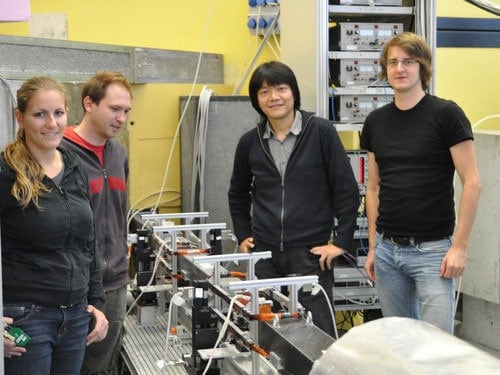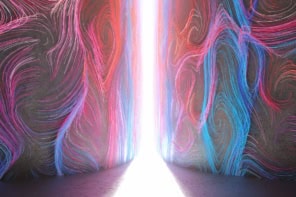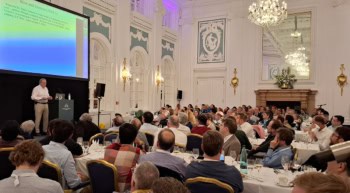
Physicists in Austria and Japan are the first to measure two physical quantities that were used in 1927 by Werner Heisenberg in an early formulation of quantum mechanics – but then abandoned because the terms did not seem to agree with the rapidly-evolving theory. The neutron experiment verifies a 2003 reformulation of Heisenberg’s famous uncertainty principle that reintroduces the concepts of error and disturbance.
When Heisenberg first proposed the uncertainty principle, it was in terms of the back-action of a measurement made on an extremely small object. His thinking is summed up in the “Heisenberg microscope” thought experiment whereby a photon is used to determine the location of an electron. The photon is scattered from the electron and then detected.
Heisenberg pointed out that such a measurement must contend with an inherent uncertainty in measuring the position at which the scattering took place – called the “error” – and an inherent uncertainty about how the momentum of the electron is changed by the scattering process. The latter is called the “disturbance” and Heisenberg showed that for a quantum system, the product of the two must be no less than a certain value – which we now recognize as being related to Planck’s constant.
Deeper statistical significance
The concepts of error and disturbance soon fell out of vogue, however, because it became apparent that there was a deeper statistical interpretation of uncertainty in quantum mechanics. As a result, Heisenberg’s ideas could not be reconciled with the mathematical expression of quantum mechanics.
Heisenberg and others began to express the uncertainty principle using statistical concepts – the product of the standard deviations of the position and momentum must be no less than a certain value. While this formulation provides a more universal definition of the uncertainty principle, there has always been some lingering interest among physicists about Heisenberg’s original ideas of error and disturbance.
Then, in 2003, Masanao Ozawa at Japan’s Nagoya University derived a new universal expression of the uncertainty principle that includes error and disturbance – as well as the standard-deviation terms. Now, Ozawa has joined forces with Yuji Hasegawa and colleagues at the Vienna University of Technology to confirm the calculation using spin-polarized neutrons. Instead of looking at position and momentum, the experiment measures two orthogonal spin components of the neutron – quantities also governed by the uncertainty principle.
Polarized neutrons
The experiment begins with a beam of mono-energetic thermal neutrons from a research reactor – the sort of neutrons that would be used in neutron-diffraction studies of solids. The neutron spins are aligned in the Z direction by passing the beam through a polarizing filter. The beam is then sent to an apparatus that determines the standard deviation in the measurement of the X-polarization, and then on to a similar apparatus that determines the standard deviation in the Y-polarization.
The error and disturbance are created by “detuning” the first apparatus so that it measures the polarization in a direction in the X–Y plane that is a small angular deviation from the X-axis. As well as creating a well-defined error in the measurement of the X-polarization, the rotation also causes a well-defined disturbance in the Y-polarization.
The error and disturbance are determined using data from the two polarization measurements – and agreed with Ozawa’s theory.
Arbitrarily small
“The smaller the error in one measurement, the larger the disturbance of the other – this rule still holds,” explains Hasegawa. However, he points out that the experiment confirms Ozawa’s result that the product of error and disturbance can be made arbitrarily small, confirming that Heisenberg was correct to abandon his original formulation.
“This is certainly the first experiment to test Ozawa’s formulation, so I think this should draw more attention to Ozawa’s formulation, and how it is universally valid unlike a naive Heisenberg measurement-disturbance relation,” said Howard Wiseman of Griffith University in Australia.
“The naive idea that the uncertainty relation can be understood as arising because any measurement of quantity X “kicks around” the value of a complementary quantity Y is still commonly presented in elementary presentations of quantum mechanics. Hopefully this experiment will help to dispel that idea.”
The experiment is described in Nature Physics.



